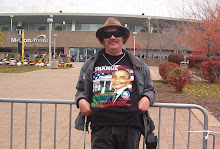Previously, I discussed the manner in which the multiple narrators of my novel, Sweetheart of the Lonesome Boulevard, tell two alternate, interpenetrating stories, neither of which is entirely known to any one narrator. Indeed, the narrators themselves experience their existence as disconnected and chaotic, while meaning, coherence, and significance is communicated by means of the reader’s synthesis of all their various tales. I suggested that the ultimate meaning of this novel is essentially a spiritual one, and thus can be communicated only by symbols. In this post I shall point out some of the central symbolic structures which I have constructed in this work.
The Four Elements Each of the four parts of the novel employs a different element to draw attention to the rôle of humanity within the natural world. In Part One, the 18-year-old Dorf is stranded by a flood that destroys much of his home town. As an undergraduate in Part Two, he desperately seeks to rescue priceless paintings from a fire that breaks out in an art gallery. In his late twenties by Part Three, Dorf is trapped overnight in an abandoned mine. Having turned forty in Part Four, he works for a political candidate whose opponent conducts his campaign largely by radio.
Yet water, fire, earth, and air do not simplistically represent the violent indifference of nature to the humanity Dorf represents, nor are they pathetically fallacious. The flood was caused by a haphazard dam formed by the dumping of plowed snow on the river. The gallery fire spread from a nearby bonfire built in the midst of gale-force winds. The mine into which Dorf falls was the scene not only of his bigoted grandfather’s recent death, but also of a long-concealed hate crime. Like the airwaves upon which lies and misrepresentations are broadcast in Part Four, the prominence of the four elements points to stupidity and brutality, not of Hardyesque Nature, but of humanity at its worst.
The Arts Humanity at its best is represented by allusions and references to works of artistic creation, both intertextually actual and intratextually imagined. Music, particularly Rock and Roll, runs through Part One. Dorf and his friends listen constantly to the radio; Shorty, a record-store owner, is Dorf’s mentor, and Shorty’s own tale is focused on his encounter with Buddy Holly. In Part Two, Dorf’s attention is very much on painting. His girlfriend Myra is an art historian; Mr Diggins, the art-collecting undertaker, donates his collection of 20th century American masterpieces to Dorf’s college; and the wounded painter Dennis Parker is introduced as a character. Dorf, in Part Three, is concerned with fiction, as he struggles to begin his career as a writer in the midst of distractions both economic and romantic, and the dead poet Peter Aram--originally introduced in Elaine's Tale in Part One--becomes the center of a mystery. Questions of political and religious rhetoric—as art, as communication, as anti-art and dis-communication—dominate Part Four. This emphasis on what human beings are able to create contrasts with the elemental symbols in a manner that hearkens back to one of the most enduring of dichotomous themes in Western literature, that of Nature and Culture.
In my next post, I shall further discuss the symbolic structure of Sweetheart of the Lonesome Boulevard, examining the three most important symbols in the novel: ‘the Web,’ the Boulevard, and the Sweetheart herself.
Peace,
David P. Van
Friday, August 28, 2009
Subscribe to:
Post Comments (Atom)


No comments:
Post a Comment